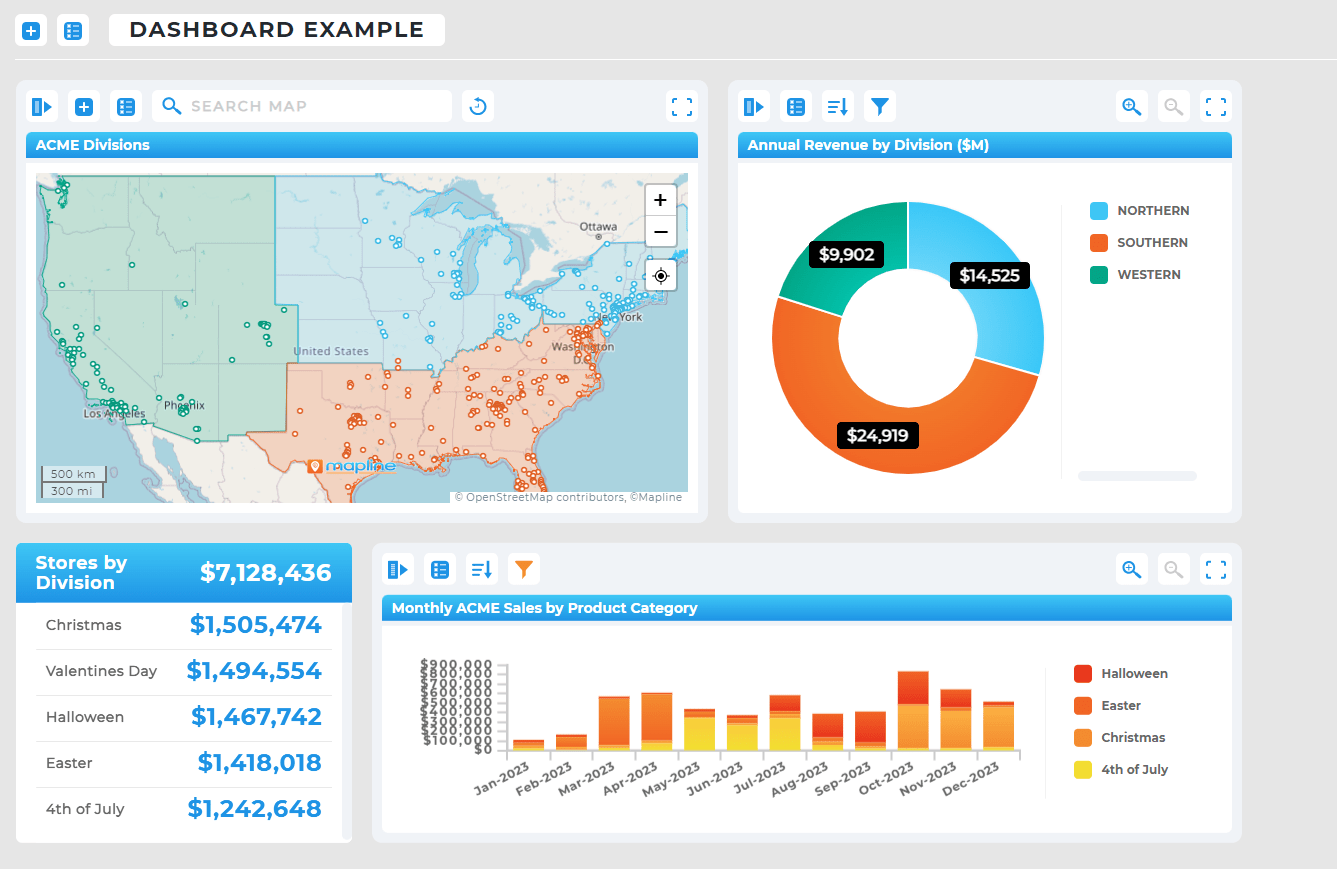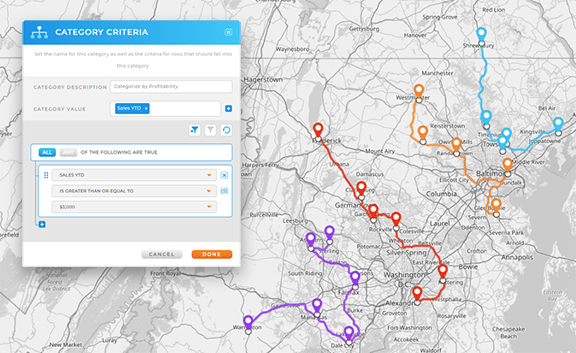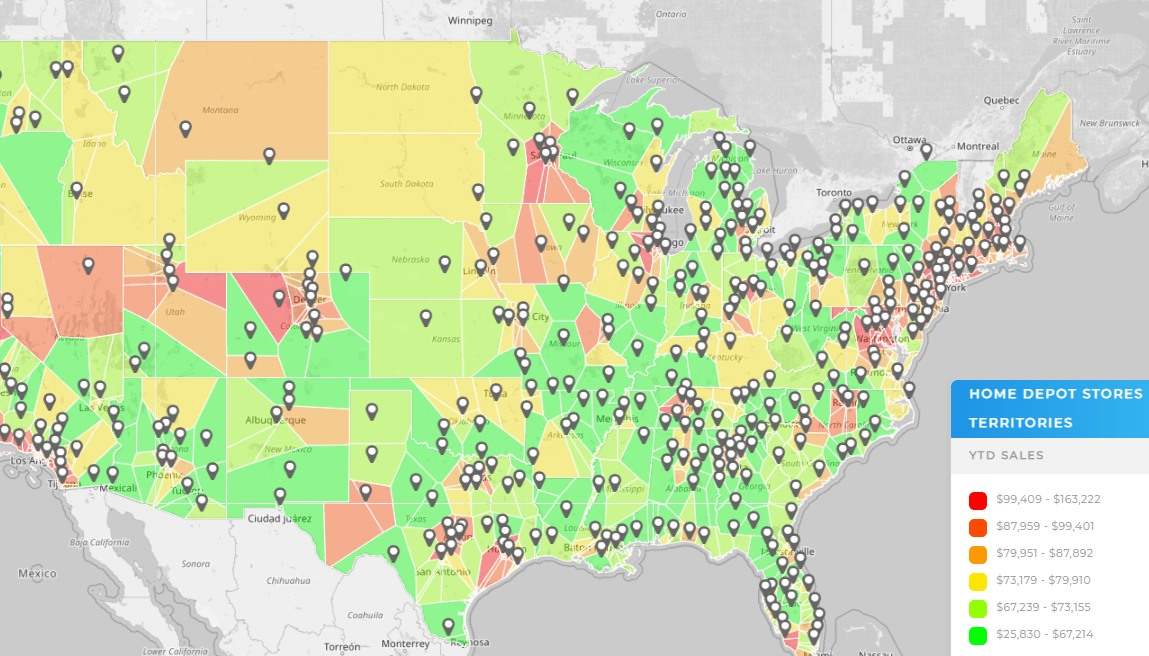Most businesses use analytics to track performance, but very few are using it to its full potential. That’s because many analytics tools focus on dashboards and summaries, but don’t go the extra step to reveal actionable trends or hidden inefficiencies.
With the right business analytics software, companies can go far beyond weekly reports. You can predict customer churn, streamline operations, optimize sales territories, and identify areas for process improvement before they cost you money. And while many teams lean on platforms like Power BI or Excel, they often overlook tools like Mapline, software designed specifically to make analytics faster, simpler, and location-aware.
Business Analytics Best Practices That Drive Growth
Great analytics isn’t just about viewing data—it’s about turning it into action. That means your business analytics platform should do more than aggregate metrics. It should help you:
- Spot patterns in customer behavior
- Predict future performance with confidence
- Visualize operational gaps in real time
- Track performance across teams and regions
- Quickly adjust your strategy when things change
Mapline is built with these goals in mind. It doesn’t just show data; it makes it make sense. From predictive analytics to automated reports, you get the tools you need to act fast and lead smarter. And because it’s map-first, you can instantly spot geographic trends that traditional dashboards often miss.


Pro Tip: Looking to boost retention or streamline your operations? Use Geo BI to layer customer behavior data onto real-world maps. You’ll quickly spot which regions are underperforming, which accounts are at risk, and where your team should focus next.
Surprising Use Cases for Business Analytics Software
Many companies limit their analytics software to standard KPIs and monthly dashboards—but that’s just the tip of the iceberg. With the right tools, analytics can drive improvements across unexpected areas of your business. From forecasting customer churn to fine-tuning delivery routes or rebalancing sales territories, overlooked use cases often deliver the highest ROI. The key is to combine performance data with geographic insights, operational workflows, and predictive models. Business analytics software like Mapline makes it easy to uncover these hidden opportunities—no data science degree required.
Predictive Business Analytics for Sales Forecasting
It’s easy to review what happened last quarter—but what about next quarter? With predictive business analytics, you can build more accurate forecasts using historical trends and machine learning. Mapline makes this easy by allowing you to overlay performance data with regional insights, helping you predict where demand will rise and where resources are spread too thin.

Customer Behavior Analysis for Churn Prevention
Many teams wait until customers leave to ask why. But analytics can help you spot churn risk long before it happens. Use Mapline to track customer behavior over time and across locations, like purchase frequency, support requests, or service delays. Then take proactive steps to retain high-value accounts before it’s too late.

Process Improvement for Operations and Logistics
Six Sigma and other process improvement methodologies rely on data, but collecting and analyzing that data often slows teams down. With Mapline, you can visualize delivery delays, bottlenecks, and inefficiencies in real time. It’s the fast, visual way to apply continuous improvement strategies and make logistics analytics simple.

Territory Optimization for Sales and Field Teams
One of the most overlooked use cases for business analytics software is territory mapping. If your reps are overworked in some areas and under-utilized in others, you’re losing efficiency and sales. Mapline uses advanced territory optimization tools to rebalance workloads and align coverage with demand—no more guessing or clunky Excel maps.

Power BI, Excel, and Mapline: Which Platform Is Best for Analytics?
Power BI and Excel are often the go-to tools for business analysis. They’re powerful, flexible, and widely used. But that doesn’t mean they’re always the best choice—especially when time, simplicity, or geographic context matter. Here’s how Mapline compares:
| Feature | Power BI | Excel | Mapline |
|---|---|---|---|
| Ease of Use | Moderate | Basic | Very Easy |
| Map-Based Insights | Requires setup | Limited | Built-in |
| Predictive Analytics | Available with setup | Manual only | Streamlined |
| Field Team Functionality | Minimal | None | Extensive |
Mapline is ideal for teams that want location-based analytics, simple dashboards, and predictive tools without the learning curve. Whether you’re optimizing field coverage or uncovering sales trends, it gets you from data to decision—faster.
Start Turning Data Into Direction
Don’t just track what happened—predict what comes next. Whether you’re refining your sales strategy, improving customer retention, or optimizing logistics, business analytics software gives you the power to act with confidence. Mapline makes advanced analytics simple, visual, and accessible to every team member. Ready to discover what your data has been trying to tell you all along?
Business analytics software helps companies visualize data, identify trends, predict future outcomes, and make better strategic decisions. It’s used across departments—from sales to logistics to marketing.
Yes. Platforms like Mapline let you track patterns in customer activity over time, helping you spot churn risk, uncover upsell opportunities, and segment your audience more effectively.
Power BI is a powerful tool but often requires technical setup and training. Mapline offers faster implementation, simpler visuals, and built-in geographic analysis—making it easier to use for field and operations teams.
Yes. Mapline supports predictive analytics by layering historical performance with location-based forecasting and advanced calculations—helping teams plan for what’s next.
Any industry that depends on data to guide decisions can benefit—from logistics and sales to field services, home healthcare, and delivery networks.









